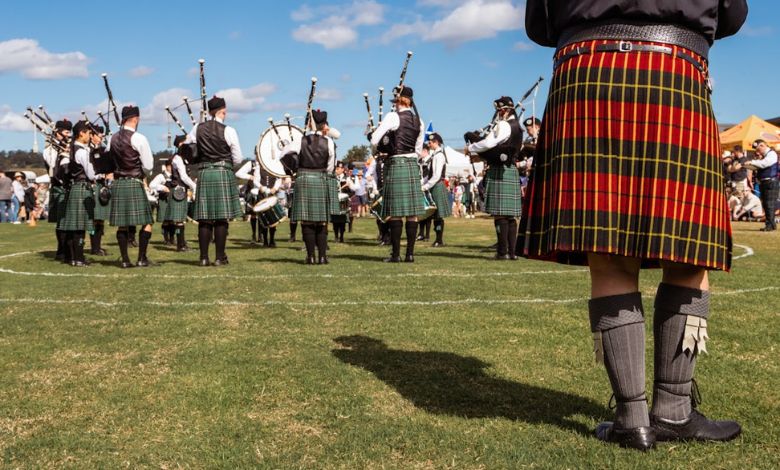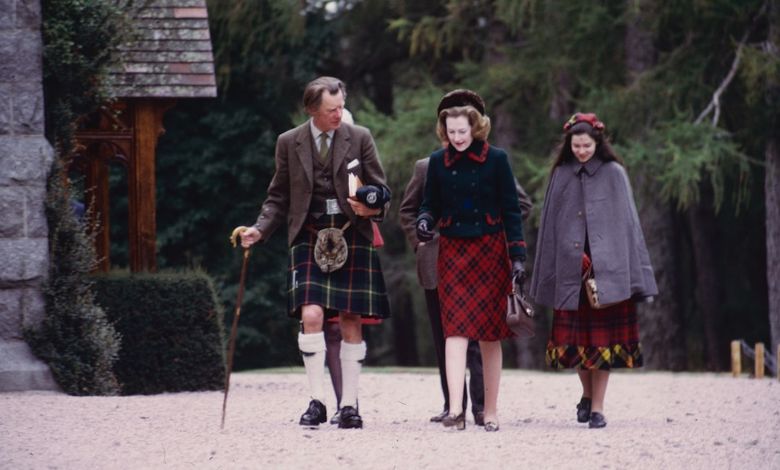Learn how kilts help with the weather in Scotland! Learn why this iconic garment is perfectly suited for Scotland’s unpredictable climate.
Scotland is famous for its amazing landscapes, rich history, and unpredictable weather. It’s the kind of place where you can experience rain, wind, sun, and fog, all in one day. So, you might wonder, “How did people manage before waterproof jackets and cozy layers?” The answer? The kilt.
I’ll never forget my first trip to the Highlands. I was bundled up in all my modern outdoor gear, but then I saw a group of locals wearing kilts like it was no big deal, totally unaffected by the chilly wind. They looked so at ease, which got me thinking: is the kilt more than just a cultural icon? That curiosity sent me down a rabbit hole, and here’s what I learned.
Kilts aren’t just steeped in tradition, they’re actually built to handle Scotland’s famously wild weather. And that got me thinking about remote jobs abroad. Just like the kilt evolved to suit Scotland’s unpredictable climate, remote work has adapted to let people thrive in new places, embracing different cultures while living and working anywhere. Let’s dive in.
Article Breakdown
Cultural Significance Meets Practicality

Before we get into the weather-related genius of kilts, let’s take a moment to appreciate their origins. Historically, kilts emerged as a practical solution for the Gaelic-speaking Highlanders of Scotland. The earliest version, the “great kilt” (or “féileadh mór”), was a full-length garment made from wool, designed to be wrapped around the body. It wasn’t just clothing, it was a multi-functional tool. The fabric doubled as a blanket at night, a protective shield against the elements, and even a makeshift tent during outdoor escapades.
Think about it: when you’re living in a rugged environment where weather can turn on a dime, you need clothing that’s versatile, durable, and adaptable. That’s exactly what kilts offered. And while today’s kilts have evolved into a more refined, pleated garment, their core practicality remains unchanged.
How Kilts Adapt to Scotland’s Weather
1. Warmth for Cold Days
If you’ve ever visited Scotland in the fall or winter, you know the chill can cut straight to the bone. Traditional kilts are made from wool, one of nature’s most impressive insulators. Wool traps heat close to the body while remaining breathable, creating a cozy barrier against biting winds.
Here’s a fun analogy: imagine wrapping yourself in a warm, stylish blanket that also lets you move freely. That’s a kilt. During my first winter hike wearing a kilt (yes, I had to try it), I was amazed at how effectively it kept me warm without making me feel overheated or sweaty. The material seemed to adapt as I moved, regulating my body temperature in a way synthetic fabrics never could.
2. Breathability for Warm Days
Scotland’s summers, while mild compared to other parts of the world, can still get warm, especially when hiking or engaging in outdoor activities. Wool’s breathability comes into play here. The fabric allows air to circulate, preventing overheating. Plus, the kilt’s design, pleats and all, encourages airflow.
Picture this: a summer’s day, a gentle breeze, and the freedom to move without feeling constricted. That’s the magic of a kilt. During one particularly sunny day in Edinburgh, I realized how much cooler I felt wearing a kilt compared to jeans. It’s as if kilts were tailor-made for Scotland’s “four seasons in one day” weather.
3. Freedom of Movement
Scotland’s terrain is nothing if not varied. From climbing craggy hills to exploring dense forests, movement is key. The kilt’s design, free-flowing and unrestrictive, makes it ideal for navigating such landscapes. Whether you’re herding sheep (as Highlanders once did) or simply wandering the Glenfinnan Viaduct, a kilt gives you unparalleled mobility.
I’ll never forget scrambling up Arthur’s Seat in a kilt. While my friends struggled with their tight trousers, I felt like I had the range of motion of a yoga instructor. The pleats at the back allow for flexibility, making it practical for both everyday tasks and outdoor adventures.
Modern Innovations for All Seasons
While traditional wool kilts remain popular, modern versions have adapted to meet contemporary needs. Today, you can find kilts made from lightweight materials, water-resistant fabrics, and even blends designed for extreme conditions. These innovations make kilts even more versatile and appealing.
For example, I recently tried a utility kilt made with quick-dry material during a rainy trek in Glencoe. Not only did it keep me dry, but it also had pockets, a modern convenience that traditional kilts lack. These adaptations prove that kilts aren’t just a nod to history; they’re practical, functional garments for the present day.
Why Kilts Are Timeless
At this point, you might be thinking, “Okay, kilts are practical, but why should I wear one today?” Here’s why:
- Sustainability: Wool is a natural, biodegradable material, making kilts an eco-friendly clothing option.
- Style: Kilts offer a unique blend of tradition and fashion. Whether paired with a chunky sweater or a tailored jacket, they’re effortlessly chic.
- Cultural Connection: Wearing a kilt isn’t just about practicality; it’s a way to honor Scottish heritage and connect with a rich history.
For me, wearing a kilt feels like stepping into the past while staying grounded in the present. It’s a reminder of the resilience and ingenuity of those who came before us, people who thrived in Scotland’s challenging climate with nothing but wool, courage, and a touch of flair.
Examples
Let’s bring it all together with some real-life scenarios:
- Hiking: Imagine trekking through the Cairngorms. A traditional wool kilt keeps you warm during chilly mornings, while its breathability prevents overheating as the day warms up.
- Festivals: Picture yourself at the Highland Games. While everyone else is sweltering in denim, you’re cool, comfortable, and stylish in your kilt.
- Everyday Wear: Think of running errands on a windy Edinburgh afternoon. Your kilt not only handles the breeze like a pro but also earns you a few admiring glances.
Key Takings
- Kilts are more than just a symbol of Scottish pride; they’re a testament to centuries of practical, thoughtful design.
- Whether it’s their ability to adapt to Scotland’s unpredictable weather, their unparalleled comfort, or their cultural significance, kilts have earned their place as timeless garments.
Useful Resources:
- Why Kilts for Men Are Making a Bold Comeback in Men’s Fashion: This article explores how kilts are blending tradition with modern fashion, highlighting their cultural significance and comfort.
- Is The Kilt Making A Comeback? Let’s Take A Look At …: Discover why kilts are becoming popular again, focusing on their affordability and versatility for everyday wear.
- Kilts Coming into Fashion: This piece discusses the versatility of kilts, making them a hot trend in fashion for both casual and formal occasions.
- Health Benefits of Wearing Kilts for Men and Women: Learn how kilts can enhance well-being, improve posture, and support an active lifestyle.



